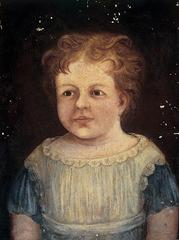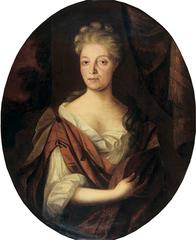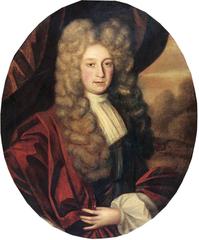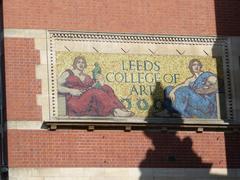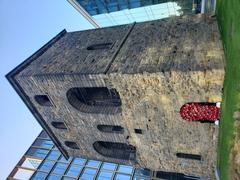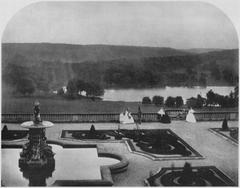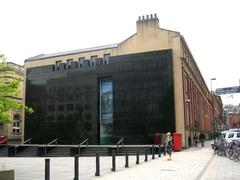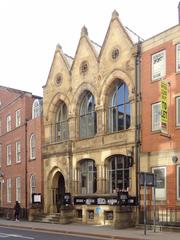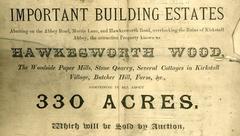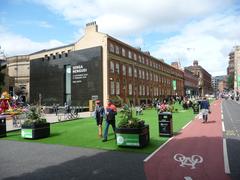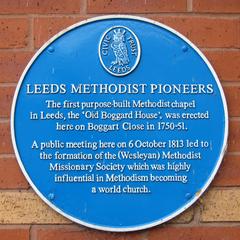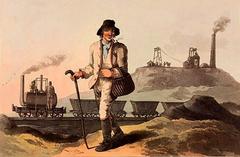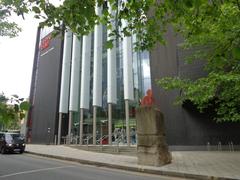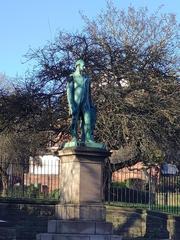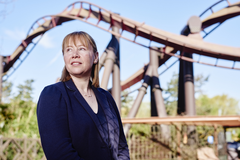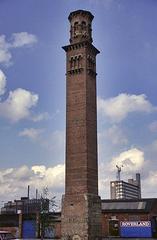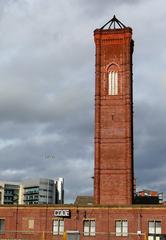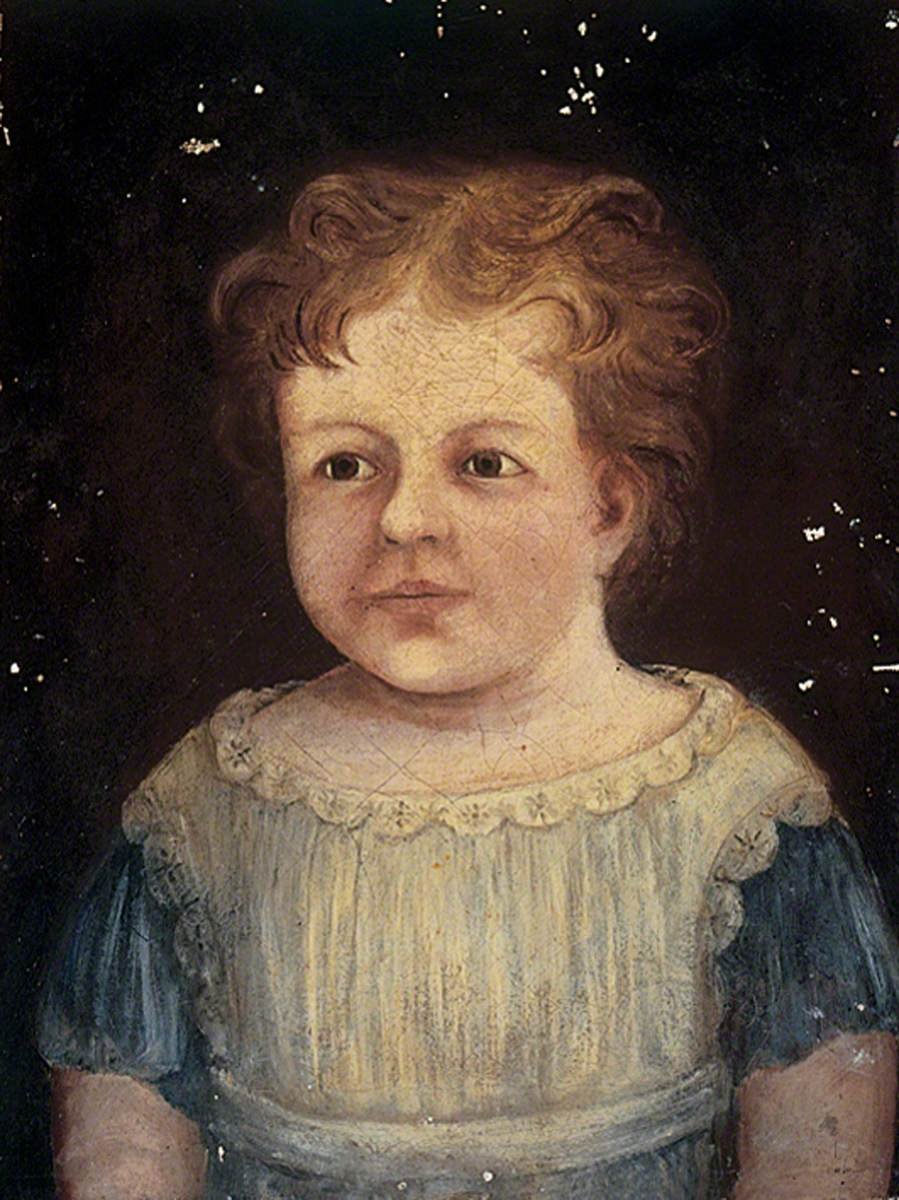
Leeds City Museum: Visiting Hours, Tickets & Historical Sites Guide
Date: 15/06/2025
Introduction
Leeds City Museum is a vibrant cultural landmark in the heart of Leeds, renowned for its dynamic exhibitions, rich collections, and inclusive community engagement. Established in 1819, the museum has evolved from its origins as a product of the Leeds Philosophical and Literary Society to become one of England’s foremost public museums. Housed in the historic former Mechanics’ Institute on Millennium Square, the museum merges classical architectural elegance with modern accessibility, inviting visitors to discover Leeds’ history, natural heritage, and the diverse communities that shape the city (Leeds Live; Historic England).
With a collection exceeding one million objects, Leeds City Museum offers a journey through time—exploring natural history, archaeology, world cultures, social developments, and fine art. Highlights include the unique “Leeds Tiger,” the ancient Egyptian mummy Nesyamun, and galleries that contextualize Leeds’ heritage within a global narrative. The museum is also a hub for education, community exhibitions (e.g., Windrush generation, LGBTQ+ heritage), and family-friendly events (Leeds Magazine; Mainly Museums). This guide provides comprehensive information on visiting hours, tickets, travel tips, museum layout, and more, ensuring your visit is memorable and rewarding (Leeds Museums & Galleries).
Contents
- Historical Overview
- Origins and Development
- Architectural Significance & Relocation
- Collection Growth & Notable Artefacts
- Civic & Cultural Role
- Exhibition Evolution
- Community Engagement & Education
- Preservation & Conservation
- Leeds City Museum in the 21st Century
- Visiting Hours & Ticket Information
- Museum Layout & Key Galleries
- Accessibility & Inclusivity
- Travel Tips & Nearby Attractions
- Frequently Asked Questions (FAQ)
- Visuals & Media
- Conclusion
- Sources
Historical Overview
Origins and Early Development
Leeds City Museum’s roots extend to 1819, when the Leeds Philosophical and Literary Society founded its first museum during the Industrial Revolution. As Leeds rapidly grew into a commercial and industrial centre, the museum’s collections—initially centered on natural history, archaeology, and the arts—reflected Victorian curiosities and the city’s expanding global connections (Leeds Live). The first purpose-built museum opened in 1821 on Park Row, becoming a local hub for education and research.
Architectural Significance and Relocation
The current museum is housed in the former Mechanics’ Institute, designed by Cuthbert Brodrick in 1868—an architect also known for Leeds Town Hall and the Corn Exchange. This Grade II* listed building is a landmark of Victorian civic architecture (Leeds Magazine; Historic England). After the original museum building was destroyed in World War II, collections were dispersed until the 2008 reopening at Millennium Square, which united the collections under one roof and delivered a modern, accessible visitor experience.
Collection Growth and Notable Artefacts
Today, Leeds City Museum’s collection exceeds one million items (Leeds Live). Among the most famous artefacts are:
- The Leeds Tiger: A Victorian taxidermy specimen, emblematic of 19th-century collecting practices.
- Nesyamun the Egyptian Mummy: A 3,000-year-old Egyptian priest, survivor of WWII bombings, captivating visitors in the Ancient Worlds gallery.
- Roman Mosaics and Greek Artefacts: Testifying to Leeds’ connections to broader historical narratives.
These collections offer a comprehensive narrative of Leeds’ development and global ties.
Civic and Cultural Role
The museum serves as a focal point for civic pride, education, and community life. Its central location in Millennium Square makes it a gathering place for residents and tourists, hosting lectures, events, and exhibitions that celebrate Leeds’ multicultural identity (Leeds Live).
Exhibition Evolution
Leeds City Museum features a blend of permanent and rotating exhibitions, engaging with topics from local history to international culture. Notable past exhibitions include the Michael Morpurgo retrospective and thematic displays like “Fast X Slow Fashion.” Permanent galleries such as “The Leeds Story” and “Life on Earth” offer interactive, educational experiences (Leeds Live; Mainly Museums).
Community Engagement and Educational Initiatives
Education is central to the museum’s mission, with dedicated learning spaces, school workshops, and events for all ages (Leeds City Museum Visual Guide). Community-curated exhibitions highlight the stories of Leeds’ diverse residents, including projects like “Pride in Place” and displays on migration, Black history, and LGBTQ+ heritage (Leeds Museums & Galleries).
Preservation and Conservation
The museum’s conservation team employs advanced techniques to protect fragile artefacts like the Leeds Tiger and Nesyamun. The building’s restoration balanced historic preservation with modern visitor needs (Historic England; Leeds Live).
Leeds City Museum in the 21st Century
Leeds City Museum stands as a dynamic institution, reflecting Leeds’ evolving identity and commitment to inclusivity, education, and cultural exchange. It continues to innovate through digital resources, community engagement, and collaborative citywide initiatives (Leeds Magazine).
Visiting Hours & Ticket Information
- Opening Hours: Tuesday to Sunday, 10:00 am – 5:00 pm; 11:00 am – 5:00 pm on bank holidays. Closed on Mondays (except bank holidays) (WhichMuseum; Leeds Museums & Galleries).
- Admission: Free entry for all visitors. Special exhibitions or workshops may require a ticket or donation (Leeds List).
- Booking: No advance booking needed for general admission; check the official website for event bookings.
- Location: Millennium Square, Leeds, LS2 8BH. Easily reached by public transport; parking available nearby (Where to Go With Kids).
Museum Layout & Key Galleries
Leeds City Museum spans four floors and features six permanent galleries:
- Central Hall (Ground Floor): Visitor orientation with a large map of Leeds and scale model of Quarry Hill flats. Café, gift shop, and information desk also located here.
- The Leeds Story (First Floor): Traces Leeds’ development from prehistoric times to today, including interactive displays on migration, industry, and community.
- World View Gallery (Second Floor): Celebrates global cultures with highlights like the “Voices of Asia” exhibition and Collector’s Cabinet, featuring rare artefacts.
- Ancient Worlds Gallery (Third Floor): Showcases the Nesyamun mummy, Roman-era discoveries, and Greek artefacts.
- Life on Earth Gallery: Natural history displays, including fossils, taxidermy, and environmental exhibits.
- Special Exhibitions Space: Rotating exhibitions on topics such as “Living with Death” and “Miffy’s 70th Birthday.”
Clear signage, accessible lifts, and floor maps ensure easy navigation (WhichMuseum).
Accessibility & Inclusivity
Leeds City Museum is fully committed to accessibility and inclusivity:
- Step-free access and lifts to all floors.
- Accessible toilets and baby-changing facilities.
- Sensory maps, quiet spaces, and visual guides for visitors with autism or sensory needs (Leeds City Museum Visual Guide).
- Assistance dogs welcome.
- Object handling sessions for visually impaired visitors.
- Dedicated staff trained to support diverse needs.
Travel Tips & Nearby Attractions
- Duration: Most visitors spend 1.5–3 hours; family visits or special events may take longer.
- Peak Times: Weekends and school holidays are busiest; visit on weekday mornings for a quieter experience.
- Group Visits: Advance booking recommended for school groups and large parties.
- Nearby Attractions: Royal Armouries Museum, Leeds Art Gallery, Henry Moore Institute, Leeds Town Hall, and Corn Exchange—all within walking distance.
- Refreshments: Onsite café and numerous nearby dining options on Millennium Square.
Frequently Asked Questions (FAQ)
Q: What are Leeds City Museum’s opening hours?
A: Tuesday–Sunday, 10:00 am–5:00 pm; 11:00 am–5:00 pm bank holidays; closed Mondays except bank holidays.
Q: Is admission to Leeds City Museum free?
A: Yes, general admission is free. Some special events may require tickets.
Q: Is the museum wheelchair accessible?
A: Yes, step-free access, lifts, and accessible toilets are available.
Q: Can I book group tours or workshops?
A: Yes, advance booking is recommended for group visits and educational workshops.
Q: Can I combine my visit with other attractions?
A: Absolutely—several key sites are within walking distance.
Q: Is photography allowed?
A: Photography for personal use is permitted (without flash or tripods); restrictions may apply in some exhibitions.
Visuals & Media
- Leeds City Museum – Museums & Galleries Official Gallery
- Photos and interactive maps on the museum website
- Virtual tours and downloadable guides available online
Image Suggestions:
- Leeds City Museum exterior (“Leeds City Museum historic building exterior”)
- Central Hall (“Leeds City Museum Central Hall with visitor orientation map”)
- Nesyamun mummy display (“Ancient Egyptian mummy Nesyamun at Leeds City Museum”)
- Museum floor plan (“Leeds City Museum floor plan map”)
Conclusion
Leeds City Museum is a cornerstone of the city’s cultural landscape, offering free access to a wealth of history, community narratives, and educational resources. Its central location, accessible facilities, and diverse exhibitions make it an essential destination for anyone exploring Leeds historical sites. Whether you’re fascinated by ancient civilizations, intrigued by local heritage, or seeking family-friendly activities, the museum provides a welcoming and inspiring environment. Plan your visit by checking Leeds City Museum visiting hours, and consider using the Audiala app for guided tours, updates, and exclusive content.
Summary & Visitor Recommendations
Leeds City Museum stands as a testament to Leeds’ dynamic history, multicultural identity, and commitment to education and inclusivity. With thoughtfully designed galleries, engaging family programs, and a central role in community life, the museum welcomes visitors of all ages and backgrounds. Maximize your experience by planning your visit around current exhibitions and special events, and explore the wealth of digital resources available (Leeds Live; Leeds Museums & Galleries; Leeds Magazine; Mainly Museums).
Sources and Official Links
- Leeds Live: Leeds City Museum Opening Times
- Leeds Magazine: Historical Significance in Leeds
- Leeds City Museum Visual Access Guide (PDF)
- Leeds Museums & Galleries: What’s On
- Mainly Museums: A Showcase of Heritage and History
- Leeds Museums & Galleries: Pride and Place Exhibition
- Historic England: Mechanics’ Institute Listing
- WhichMuseum: Leeds City Museum
- Leeds List: Free Things to Do in Leeds
- Where to Go With Kids: Leeds City Museum
